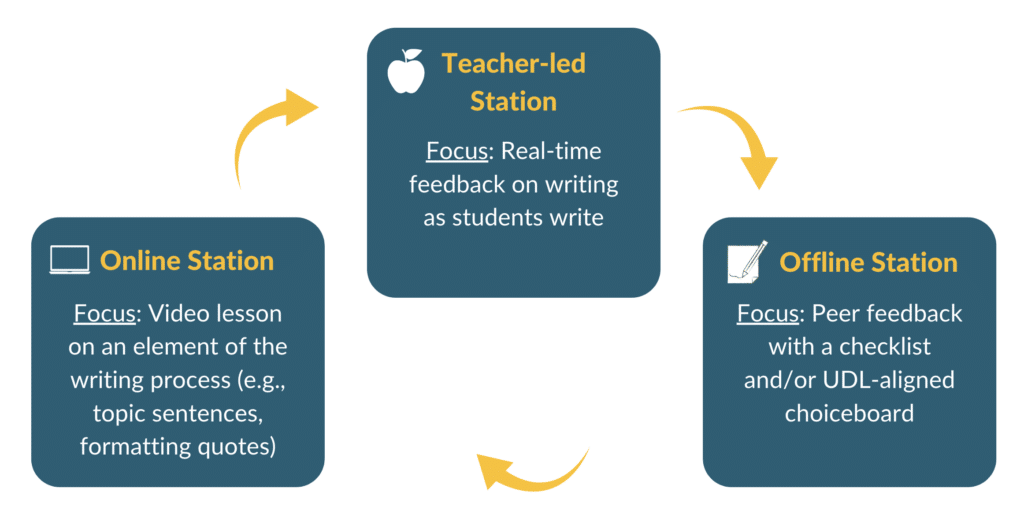How Disruptive Will ChatGPT Be?

Education circles are buzzing with the implications of ChatGPT, a chatbot developed by OpenAI
This AI technology specializes in dialogue and generates original responses to questions in moments. The answers are sophisticated, structured, and in the words of one high school teacher, are “better than the large majority of writing seen by your average teacher or professor.” The implications of AI technology for education have many educators concerned that this signals the “end of English” and the end of writing as an authentic assessment.

Listen to The Balance on Apple Podcasts, Spotify or PodBean
Why is ChatGPT causing fear among educators?
I understand why a technology like ChatGPT elicits such a powerful response from educators. It threatens to disrupt the approach many schools and colleges use to teach students. Suppose class time is used primarily to transfer information via mini-lessons or lectures, and most practice and application happen outside class. In that case, ChatGPT opens the door for students to enter prompts, copy the responses generated by ChatGPT, and submit that work as their own. Because the writing has not been copied from a website, it is nearly impossible to prove it is not the student’s original work.
When I heard about ChatGPT for the first time, my initial thought was,
If teachers design student-centered learning experiences that allow students to write with support in class, ChatGPT won’t be nearly as disruptive as some articles claim.
However, teachers who rely heavily or exclusively on the whole-group, teacher-led, teacher-paced model are relegated to the front of the room. This approach positions them to spend much of the class period talking or orchestrating the parts of a lesson. As a result, students do not have time to write in class with support.
Many teachers use the whole group, teacher-led model because they are under intense pressure to cover the curriculum or because their curriculum is written in a whole group format. This may limit what they feel they can do in class with students. The pressure to cover curriculum is an issue schools and districts must wrestle with as they adopt curriculum and ask teachers to implement it with fidelity. Keeping up with rigorous pacing guides may leave little to no room for anything other than direct instruction.
Is the technology or the way we are teaching the real issue?
ChatGPT is one example of a force outside of education threatening the status quo, and it won’t be the last. The pandemic also disrupted education, requiring teachers to shift quickly to online, hybrid, and concurrent teaching environments. The pandemic and now AI technology like ChatGPT highlight the limitations of the traditional teacher-led approach to teaching. It is not flexible enough to weather the metaphorical storms happening beyond our classroom walls.
We do not need to fear disruptive technology if we adjust our approach to teaching by utilizing more flexible blended learning models. There are specific steps teachers can take right now to mitigate their fears about the impact of this AI technology and others like it.
#1 Rethinking Our Approach to Homework
First, we must re-evaluate the value of sending work home with students to complete it in isolation. Yes, for some students, homework can help them to develop self-regulation and time management skills and is positively correlated to higher levels of self-efficacy or confidence in their abilities (Bembenutty, 2011). However, for many students, homework creates serious equity concerns (Kohn, 2006). They may not have a home environment conducive to working on academic tasks. They may not have access to the supplies or technology needed to complete assignments. They may not have an adult who is home, speaks the language homework is in or has the subject-area knowledge to help their child if they get stuck or need support. These equity concerns are one reason to question the current approach to assigning homework.
ChatGPT adds another layer of complexity to the conversation about homework. If we ask students to post their ideas to an asynchronous discussion board or complete a writing task at home, they may use ChatGPT to generate a response and get that assignment off their plates. In one article, an English teacher says, “Teenagers have always found ways around doing the hard work of actual learning.” When I read that, I thought we all find ways around doing things we don’t value.
If students are not interested in or do not see value in a topic or task, it does not surprise me that they would either choose not to invest their time and energy into that task or find creative ways around it (enter technology like ChatGPT). Writing is a cognitively challenging task. Students who feel unsure how to complete a piece of writing or struggle to make sense of concepts and texts may turn to ChatGPT to avoid spending hours struggling through a writing assignment. Grades are also a powerful force that can motivate some students to submit work that is not their own to avoid losing points.
#2 Design Lessons that Allow Students to Write in Class with Support
As I read “The End of High School English,” another quote that struck me was, “students have always arrived at that moment when they’re on their own with a blank page, staring down a blinking cursor, the essay waiting to be written.” As a former high school English teacher with 16 years of experience, I remember when I decided to stop sending writing home with students. In part, I was frustrated by the alarming number of students who did not complete writing assignments. I also realized that they needed support as they wrote, and the feedback they received on finished products was not particularly effective in helping them to develop as writers.
Writing is a skill that requires years to develop. Instead of sending writing assignments home with students, teachers can use blended learning models (e.g., flipped classroom, station rotation, and playlist models) to design lessons that make space for these tasks in the classroom, where students benefit from teacher feedback and peer support.
For example, I frequently work with teachers to design lessons using the station rotation model to create the time and space students need to write in class. Then teachers can use their teacher-led station to provide timely, focused, and actionable feedback on writing in progress so students can take that process feedback and use it to improve the quality of their writing.

Feedback is how students feel seen and supported in class, yet significant time is dedicated to telling them how to write, and not enough time is spent supporting them as they put pen to paper or fingers to keys. If teachers plan to say the same thing the same way to everyone (e.g., how to write a thesis statement), they should record a short instructional video that students can self-pace through and rewatch as needed. If they want to provide more differentiated instruction focused on more nuanced writing skills, like how to analyze quotes, I suggest pulling that instruction into their teacher-led station. That way, teachers can work with small groups to model the process with quotes or textual evidence at different levels of complexity or rigor, provide the necessary scaffolds to support learners as they work, and guide early implementation with feedback.
#3 Cultivate a Robust Teaching Tool Belt with Multiple Instructional Models
The best way to ensure educators can meet the diversity of needs in a class while being nimble enough to make adjustments necessary to weather disruptions, like a pandemic or a sophisticated AI technology, is to use a variety of instructional models. Instead of relying on a single approach to designing learning experiences, teachers need a collection of models that allow them to use class time in more dynamic and varied ways.
In our book, UDL and Blended Learning, Dr. Katie Novak and I argue that educators need a mindset, skill set, and toolset nimble enough to thrive in any teaching and learning landscape. We argue that universally designed blended learning can arm teachers with the ability to design accessible, inclusive, and equitable learning experiences that allow them to use class time to support all students, ensuring they progress toward firm standards-aligned learning goals. As I read articles and listen to podcasts on ChatGPT, I cannot help but think that if more educators were embracing UDL and blended learning that this AI technology would not be nearly as scary or threatening.
So, how disruptive with ChatGPT be?
It depends. If educators use class time to present information and send the bulk of writing or work to be done at home, then ChatGPT could be incredibly disruptive. However, it will be less disruptive if educators are strategic about the tasks they ask students to do beyond the classroom and dedicate class time to supporting them as they work with process feedback. There may even be opportunities for teachers to use the unique written responses generated by ChatGPT to provide students with exemplars they can analyze and discuss to prepare for their writing assignments.
Technology will continue to develop and evolve. Education must also progress and advance. That requires that educators continue to learn, experiment, and grow, testing new approaches, strategies, and instructional models that help them do this work with confidence and joy. If you are reading this and want to learn more about how to design and facilitate learning that frees teachers from the front of the room to work alongside students, I have a collection of books, courses, podcasts, and other resources available to start that journey!
Listen to my full podcast
Listen to The Balance on Apple Podcasts, Spotify or PodBean







